
|
SUPPORT SITE |
|
PSS worked with engineers at the European Space Agency to develop an integrated attitude and orbit control simulation of an interstellar sail mission using the Solar Sail Module. The sail concept uses a gimballed boom for attitude control. The attitude dynamics are a two-body dynamics model with quaternion kinematics, available in the core Spacecraft Control Toolbox. The two bodies, the sail and the boom, are both assumed rigid and connected by a hinge. The gimbals are modeled individually with constraints on how rapidly each can rotate. The MATLAB script updates the guidance at a slower rate than the attitude dynamics and the entire simulation was optimized using the MATLAB profiler. Runs of 50 days took only several minutes. The commanded center of mass of the boom control system for an example run is shown below. The simulation was described in a paper at the 2007 IEEE Aerospace conference.
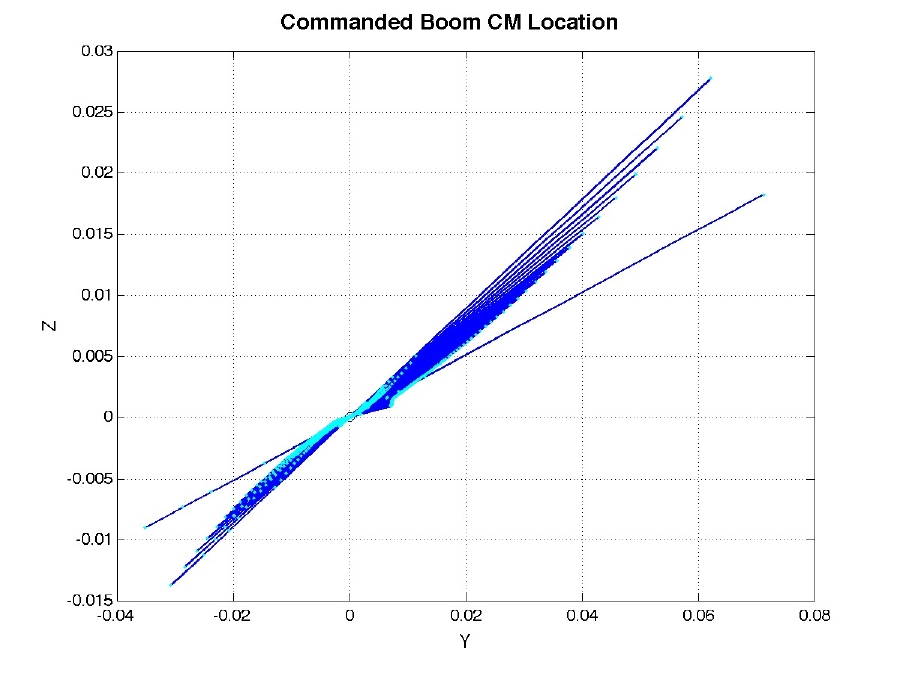
The Solar Polar Imager mission orbit is at 0.48 AU and 60 to 75 degrees inclination. Numerical optimization of the transfer to this orbit is a challenging problem, but a simple non-optimal solution can be obtained by patching together analytical locally optimal control laws. The Module has the laws derived by Colin McInnes for semi-major axis, eccentricity, inclination, ascending node, and planet-centered orbits. The following plot shows the patched SPI trajectory developed during PSS' work for Arizona State University via NASA's In-Space Propulsion problem. PSS also developed planar optimizations of the initial phase (semi-major axis reduction) which can result in zero eccentricity at the start of the inclination cranking phase. The optimization tools, using MATLAB's simplex and the Genetic Algorithm Optimization Toolbox (GAOT), are in the Sail Module.
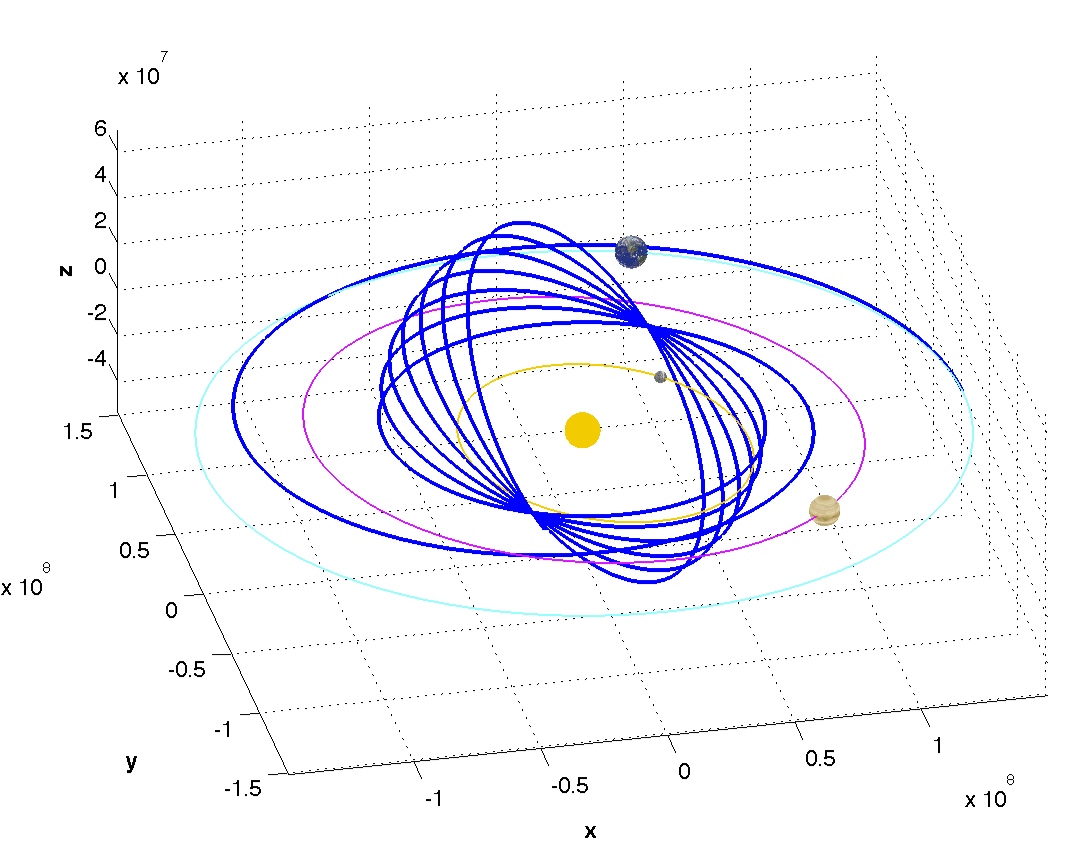
In 2006 PSS used the toolbox as a basis for designing a full-featured solar sail simulation, SailFlight. The simulation would integrate sail shape models for disturbance computation with attitude and orbit dynamics as PSS' MATLAB tools do. Algorithm prototyping and design studies are performed in MATLAB, and the real-time simulation would provide users the ability to duplicate their MATLAB models in an environment to which they can attach hardware and flight software. ATK Space Systems developing refined models of propulsive performance of real sails, considering wrinkles, crinkles, billow, and manufacturing-induced asymmetries as a consultant on the project.
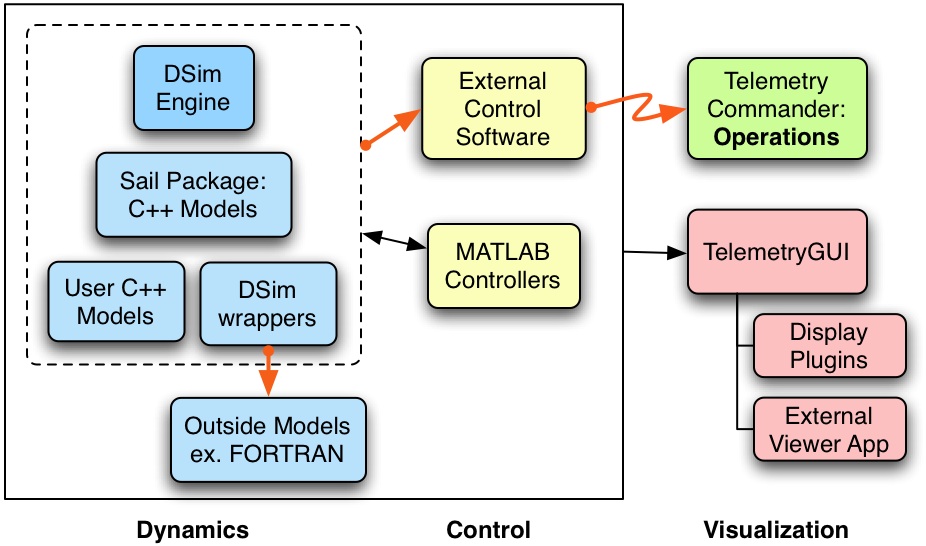 |
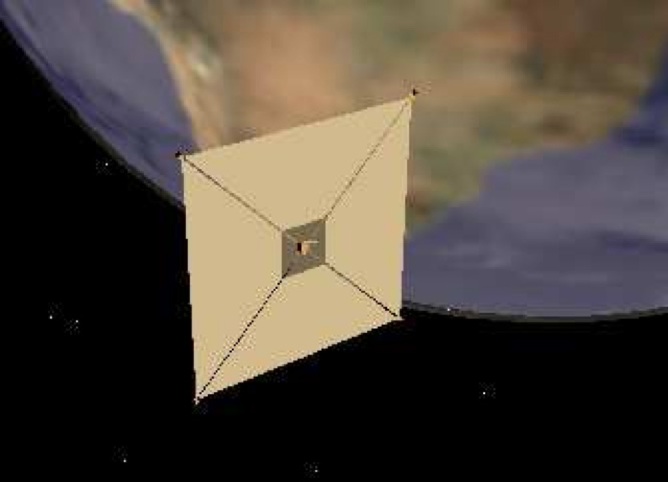 |
During PSS' work for Arizona State University via NASA's In-Space Propulsion problem, we used an AIAA student design problem as a case study for our n-body orbit integration routines. The problem consists of an asteroid which is scheduled to hit the Earth at a certain date given an initial condition. Keplerian propagation causes the asteroid to miss the Earth by over 1000 Earth radii, but adding the major planets as perturbations and numerically integrating the trajectory reduces the miss distance to 5 radii.
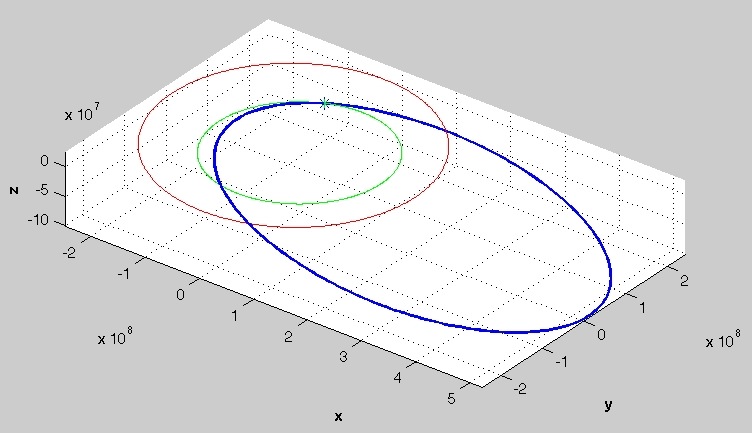
Sail-related publications including PSS staff as authors are listed below.